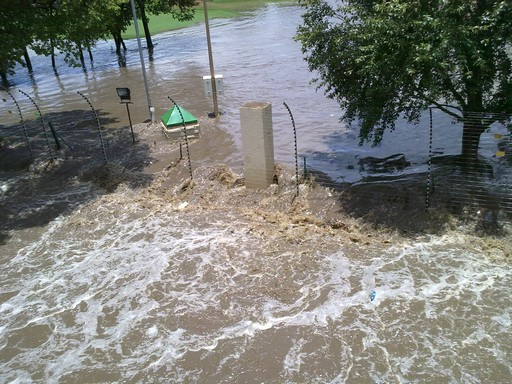Southern Africa faces worst flooding in decades
By Joe DeCapua
February 07, 2011
In the coming months, parts of southern Africa may experience the worst flooding in the last 20 or 30 years. That’s the warning Monday from the U.N. Food and Agriculture Organization (FAO). It says the La Niña weather phenomenon has brought heavier than normal rainfall, destroying thousands of hectares of agricultural land and crops so far. The seasonal rainy season is only half over and the cyclone season is expected to peak this month. FAO Senior Emergency Officer Jean Alexander Scaglia says parts of Botswana, Lesotho, Mozambique, Namibia, Zambia, Zimbabwe, South Africa and Madagascar are affected. “We are just right in the middle of the cropping season in many of these countries. So the impact of the flood damage can be very high in terms of the future harvest,” he says. It’s possible, he adds, that the entire season’s harvest could be lost. The FAO is conducting an assessment of the region and is expected to have a new estimate on crop damage next week. “It seems that we are just at the beginning of the problem,” says Scaglia. While the damage assessment is still underway, the FAO official says preliminary figures can paint a picture of what’s happening. “It’s something quite worrying,” he says, “For example, in Lesotho, it’s a bit vague but we think that probably between 20 and 40 percent of the planted area may be affected. And we also have figures very similar in other countries, which will be confirmed in the coming days.” … The FAO says, “South Africa has already declared a national state of disaster in many districts of the country due to the floods.” Crop and land damage is estimated to be in the millions of dollars.
Southern Africa May Face Worst Flooding in Decades 
Feb 4, 2011 (Sapa-AFP) — Emergency services are moving thousands of families out of low-lying areas in central and northern Mozambique as rains across Southern Africa swell water levels, says an official.
“About 500 families with five members each were evacuated to camps. Six thousand families were affected which makes it about 30, 000 people,” Belarmino Chivambo, spokesman for the national emergency operations centre, Canoe, said on Friday. Around 2, 500 people are housed in temporary settlement camps in the southern province of Gaza as the Limpopo river burst its banks, he said. “Our main worry is readiness, and to evacuate people so that if the water comes, there will be no loss of life,” Chiuvambo added. He said authorities are concerned about water levels in the Zambezi river basin in the centre of the country, the most vulnerable to flooding as downpours continued, said Chivambo. Discharges from the Cahora Bassa dam, Mozambique’s largest, were increased from 4, 900 cubic metres to 6, 400 cubic metres per second on Friday following an increase in run-off from the Kariba dam upstream along the Zambia and Zimbabwe border. Floods have killed nine people in the southern African country this year, according to official figures and almost 20, 000 hectares of crops have been lost. Around 4, 000 pupils cannot go to school and thousands of people have difficult reaching medical services or shops, Chivambo said.
Mozambique moves families away from floods
Feb 7, 2011 (Sapa) — Floods and heavy rain across southern Africa have damaged thousands of hectares (acres) of farmland and more may be hit in coming weeks, raising fears for food supplies, the UN food agency said Monday. With the rainy season still only half way through, and with the cyclone season due to peak in February, agricultural areas along the region’s rivers in remain at high risk of flooding, the Food and Africulture Organisation warned. Most countries in the region, including Botswana, Lesotho, Mozambique, Namibia, South Africa, Zambia and Zimbabwe, are affected, it said, quoting quoted Cindy Holleman, FAO regional emergency coordinator. “Food insecurity levels are already critical in the affected areas of some of these countries and floods will only further worsen the ability of poor farmers to cope and feed their families in the coming months,” Holleman added. … In Lesotho, one of the poorest countries in the sub-region, up to 60 percent of harvests have been lost in some areas and more than 4,700 head of livestock, mainly sheep and goats, are dead, the FAO reported. Localized crop losses are also reported along river banks in southern and central Mozambique. The government has declared a red alert for central and southern Mozambique as water flows in the major rivers are above alert levels. South Africa has already declared a national state of disaster in many districts of the country due to the floods that have destroyed thousands of hectares of crop land, and caused damages estimated in millions of dollars.
